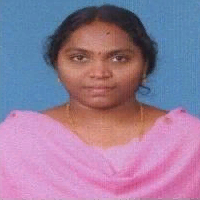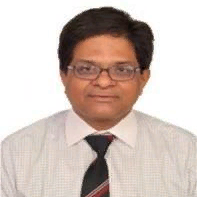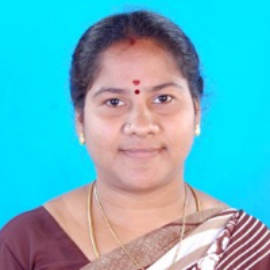International Journal of Image, Graphics and Signal Processing (IJIGSP)
IJIGSP Vol. 9, No. 10, 8 Oct. 2017
Cover page and Table of Contents: PDF (size: 858KB)
Texture Classification Using Complete Texton Matrix
Full Text (PDF, 858KB), PP.60-68
Views: 0 Downloads: 0
Author(s)
Index Terms
Texton, Histogram, quantization, color gradient, dimensionality
Abstract
This paper presents a complete image feature representation, based on texton theory proposed by Julesz’s, called as a complete texton matrix (CTM)for texture image classification. The present descriptor can be viewed as an improved version of texton co-occurrence matrix (TCM) [1] and Multi-texton histogram (MTH) [2]. It is specially designed for natural image analysis and can achieve higher classification rate. TheCTM can express the spatial correlation of textons and can be considered as a generalized visual attribute descriptor. This paper initially quantized the original textures into 256 colors and computed color gradient from RGB vector space. Then the statistical information of eleven derived textons, on a 2 x 2 grid in a non-overlapped manner are computed to describe image features more precisely. To reduce the dimensionality the present paper extended the concept of present descriptor and derived a compact CTM (CCTM). The proposed CTM and CCTM methods are extensively tested on the Brodtaz, Outex and UIUC natural images. The results demonstrate the superiority of the present descriptor over the state-of-art representative schemes such as uniform LBP (ULBP), local ternary pattern (LTP), complete –LBP (CLBP), TCM and MTH.
Cite This Paper
Y.Sowjanya Kumari, V. Vijaya Kumar, Ch. Satyanarayana," Texture Classification Using Complete Texton Matrix", International Journal of Image, Graphics and Signal Processing(IJIGSP), Vol.9, No.10, pp. 60-68, 2017. DOI: 10.5815/ijigsp.2017.10.07
Reference
[1]Guang-Hai Liu, Jing-Yu Yang, Image retrieval based on the texton co-occurrence matrix, Pattern Recognition 41 (2008) 3521 – 3527.
[2]Guang-Hai Liu a, LeiZhang b, Ying-KunHou d, Zuo-YongLi c, Jing-YuYang, Image retrieval based on multi-texton histogram, Pattern Recognition, 43(2010),2380–2389.
[3]V.Vijaya Kumar, A. Srinivasa Rao, YK Sundara Krishna, “Dual Transition Uniform LBP Matrix for Efficient Image Retrieval”, I.J. Image, Graphics and Signal Processing (IJIGSP), Vol. 8, 2015, pp: 50-57.
[4]H. Marko, M. Pietikäinen, and C. Schmid, “Description of interest regions with center-symmetric local binary patterns,” in Proc. Comput. Vis., Graph. Image Process., vol. 4338. 2006, pp. 58–69.
[5]Pullela R Kumar, V. Vijaya Kumar, Rampay.Venkatarao, “Age classification based on integrated approach”. International Journal Of Image, Graphics And Signal Processing (IJIGSP), Vol. 6, Iss.7, 2014, pp. 50-57.
[6]V. Vijaya Kumar, Jangala. SasiKiran , V.V. HariChandana, “An effective age classification using topological features based on compressed and reduced grey level model of the facial skin”, International journal of image, graphics and signal processing (IJIGSP), , Vol.6, Iss.1, 2013, pp.9-17.
[7]Mohd.AbdulMuqeet, RaghunathS.Holambe, Enhancing Face Recognition Performance using Triplet Half Band Wavelet Filter Bank, I.J. Image, Graphics and Signal Processing, 2016, 12, 62-70.
[8]G S Murty ,J SasiKiran , V.Vijaya Kumar, “Facial expression recognition based on features derived from the distinct LBP and GLCM”, International Journal of Image, Graphics And Signal Processing (IJIGSP), Vol.2, Iss.1, pp. 68-77,2014.
[9]K. Srinivasa Reddy, V.Vijaya Kumar, B.Eshwarareddy, “Face Recognition based on Texture Features using Local Ternary Patterns”, I.J. Image, Graphics and Signal Processing (IJIGSP), Vol.10, 2015, pp: 37-46.
[10]G. SatyanarayanaMurth, J.SasiKiran, V. Vijaya Kumar, “ Facial expression recognition based on features derived from the distinct LBP and GLCM, I.J. Image, Graphics and Signal Processing (IJIGSP), Vol. 2, 2014, pp: 68-77.
[11]X. Tan and B. Triggs, “Enhanced local texture feature sets for facerecognition under difficult lighting conditions,” IEEE Trans. ImageProcess., vol. 19, no. 6, pp. 1635–1650, Jun. 2010.
[12]M. Srinivasa Rao , V.Vijaya Kumar, Mhm Krishna Prasad, “Texture Classification based on First Order Local Ternary Direction Patterns”, I.J. Image, Graphics and Signal Processing (IJIGSP), 2017, 2, 46-54.
[13]Z. Guo, L. Zhang, and D. Zhang, “Rotation invariant texture classificationusing LBP variance (LBPV) with global matching,” Pattern Recognit., vol. 43, no. 3, pp. 706–719, 2010.
[14]G. Zhao, T. Ahonen, J. Matas, and M. Pietikäinen, “Rotationinvariantimage and video description with local binary pattern features,” IEEE Trans. Image Process., vol. 21, no. 4, pp. 1465–1477, Apr. 2012.
[15]R. M. Haralick, K. Shanmugam, and I. Dinstein, “Textural features forimage classification,” IEEE Trans. Syst., Man, Cybern., vol. SMC-3, no. 6, pp. 610–621, Nov. 1973
[16]G. Cross, A. Jain, Markov random field texture models, IEEE Trans. Pattern Anal. Mach. Intell. 5 (1) (1983) 25–39.
[17]J. Mao, A. Jain, Texture classification and segmentation using multi-resolution simultaneous autoregressive models, Pattern Recognition 25 (2) (1992) 173–188.
[18]F. Liu, R. Picard, Periodicity, directionality, and randomness: wold features for image modeling and retrieval, IEEE Trans. Pattern Anal. Mach. Intell. 18 (7) (1996) 722–733.
[19]B.S. Manjunath, W.Y. Ma, Texture features for browsing and retrieval of image data, IEEE Trans. Pattern Anal. Mach. Intell. 18 (8) (1996) 837–842.
[20]J. Han, K.-K. Ma, Rotation-invariant and scale-invariant Gabor features for texture image retrieval, Image Vision Comput. 25 (2007) 1474–1481
[21]T. Chang, C.C. Jay Kuo, Texture analysis and classification with tree-structured wavelet transform, IEEE Trans. Image Process. 2 (4) (1993) 429–441.
[22]Laine, J. Fan, Texture classification by wavelet packet signatures, IEEE Trans. Pattern Anal. Mach. Intell. 11 (15) (1993) 1186–1191.
[23]D.-C. He and L. Wang, “Texture unit, texture spectrum, and texture analysis,” IEEE Trans. Geosci. Remote Sens., vol. 28, no. 4, pp. 509–512, Jul. 1990
[24]T. Ojala, M. Pietikäinen, and D. Harwood, “Performance evaluation oftexture measures with classification based on Kullbackdiscrimination ofdistributions,” in Proc. 12th IAPR Int. Conf. Pattern Recognit., vol. 1.Oct. 1994, pp. 582–585.
[25]T. Ojala, M. Pietikäinen, and T. Mäenpää, 2002, “Multi-resolution gray-scale and rotation invariant texture classification with local binary patterns,” IEEE Trans. Pattern Anal. Mach. Intell., vol. 24, no. 7, pp. 971–987.
[26]R. L. Kashyap and A. Khotanzad, 1986, “A model-based method for rotation invariant texture classification,” IEEE Trans. Pattern Anal. Mach. Intell., vol. 8, no. 4, pp. 472–481,
[27]Julesz B (1981): Textons, the elements of texture perception, and their interactions. Nature 290:91-97.
[28]Eswara Reddy, P.ChandraSekhar Reddy, V.Vijaya Kumar, 2012 “Texton based shape features on local binary pattern for age classification”, International journal of image, graphics and signal processing (IJIGSP), Vol. 7, No.4, pp.54-60.
[29]Beck J, Prazdny K, Rosenfeld A (1983): A theory of textural segmentation. In: Human and Machine Vision, Beck J, Hope B, Rosenfeld A, eds. New York: Academic Press, pp. 1-38
[30]J. Malik, S. Belongie, J. Shi and T. Leung, “Textons, Contours and Regions: Cue Integration in Image Segmentation,” Proc. of Seventh International Conference on Computer Vision, Kerkyra, Greece, Sept 20-27, 1999, pp. 918-925.
[31]M Varma, A Zisserman, in Proceedings of the 7th European Conference on Computer Vision, Copenhagen, Denmark. Computer Vision, 3. Classifying images of materials: Achieving viewpoint and illumination independence (SpringerBerlin, 2002), pp. 255–271.
[32]U Ravi Babu,V Vijay Kumar,B. Sujatha, “Texture classification based on texton features”, International Journal Of Image, Graphics and Signal Processing (IJIGSP), Vol.4, Iss.8, 2012, pp.36-42, ISSN: 2074-9074.
[33]M. Varma and A. Zisserman, 2009, “A statistical approach to material classification using image patch exemplars,” IEEE Trans. Pattern Anal. Mach. Intell., vol. 31, no. 11, pp. 2032–2047.
[34]M. Varma, and A. Zisserman, 2005, “A statistical approach to texture classification from single images,” International Journal of Computer Vision, vol. 62, no. 1-2, pp. 61-81.
[35]P. Kiran Kumar Reddy, B. Eswar Reddy, V Vijay Kumar, “Wavelet based texton cross and diagonal shape descriptor for discrimination of textures”, International Journal of Digital Signal and Image Processing (IJDSIP). Vol. 2, Issue 3, 2014, pp: 11-26, ISSN : 2347-4521
[36]M.Joseph Prakash, Saka.Kezia, Dr.I.SantiPrabha, Dr.V.Vijaya Kumar, “A New Approach for Texture Segmentation using Gray Level Textons” , International Journal of Signal and Image Processing (IJSIP), Vol. 6, Iss. 3, 2013, pp:81-89, ISSN: 2005-4254
[37]Z. Guo, L. Zhang, and D. Zhang, “A completed modeling of local binary pattern operator for texture classification,” IEEE Trans. Image Process., vol. 9, no. 16, pp. 1657–1663, Jun. 2010
[38]http://www.ux.uis.no/tranden/brodatz.htmlS.
[39]http://www.outex.oulu.fi/index.php?page=image_databaseS.
[40]Svetlana Lazebnik, CordeliaSchmid and Jean Ponce. A Sparse Texture Representation Using Local Affine regions. IEEE Transactions on Pattern Analysis and Machine Intellignece, Vol.27, No.8, pp:1265-1278, August, 2005.


